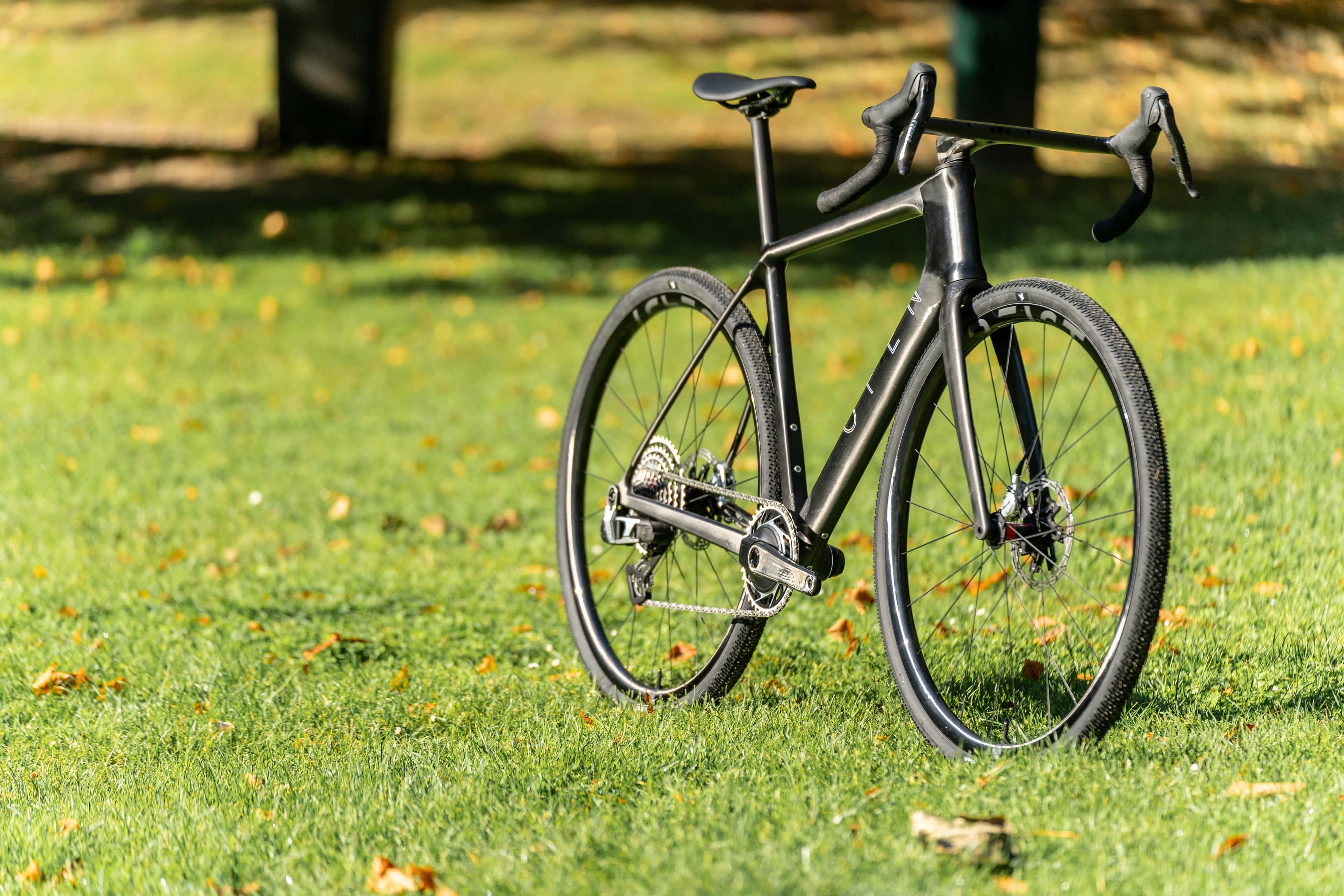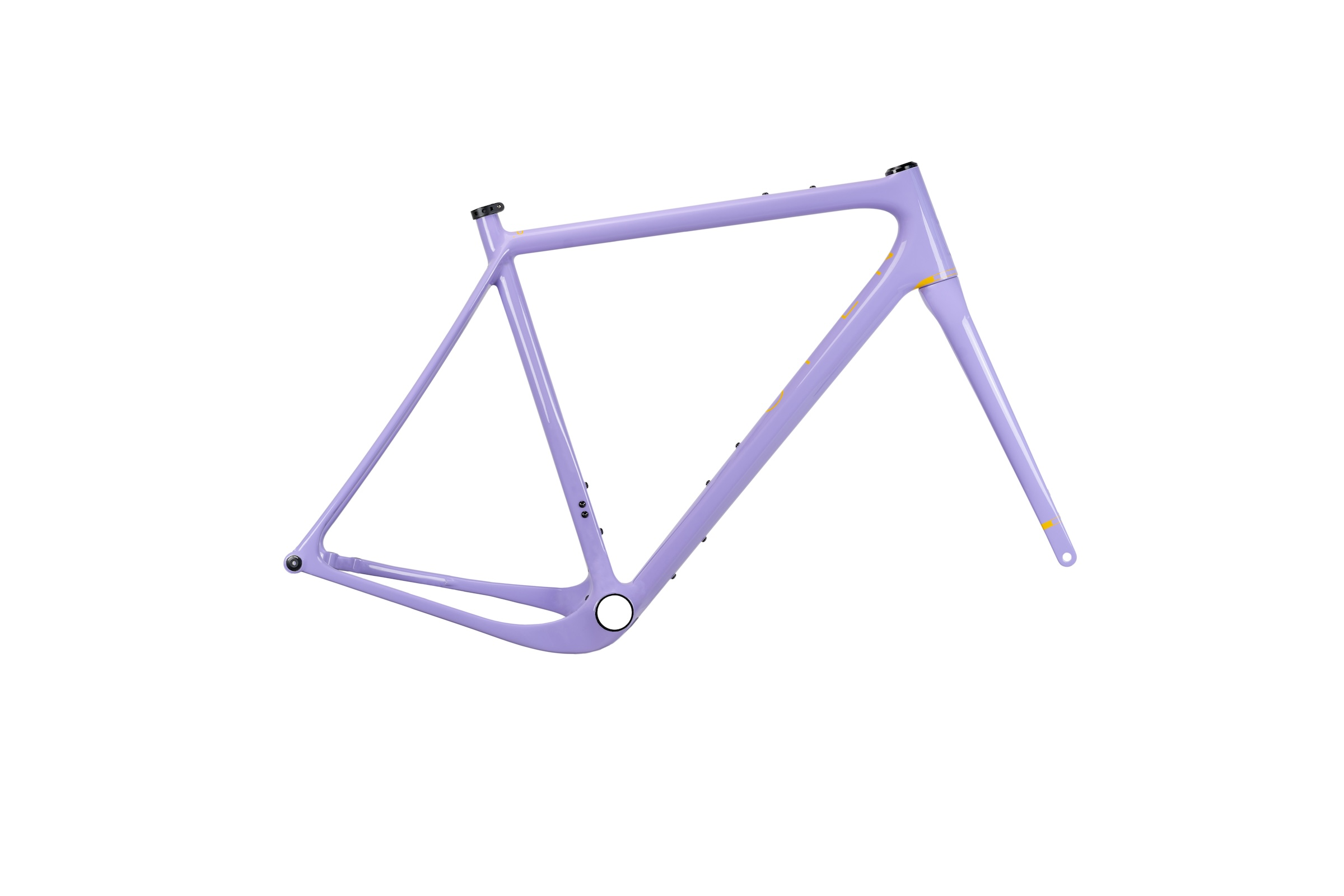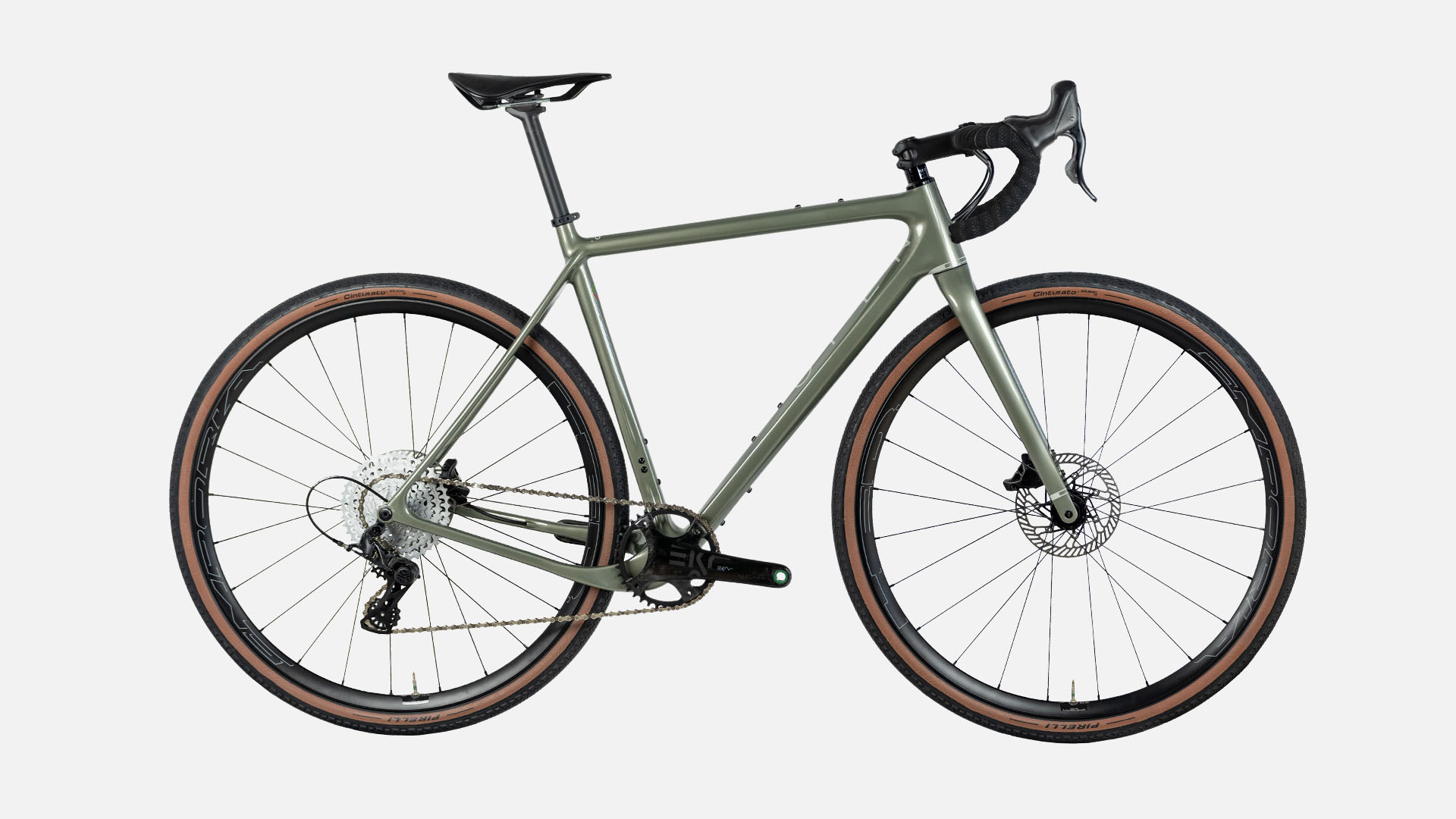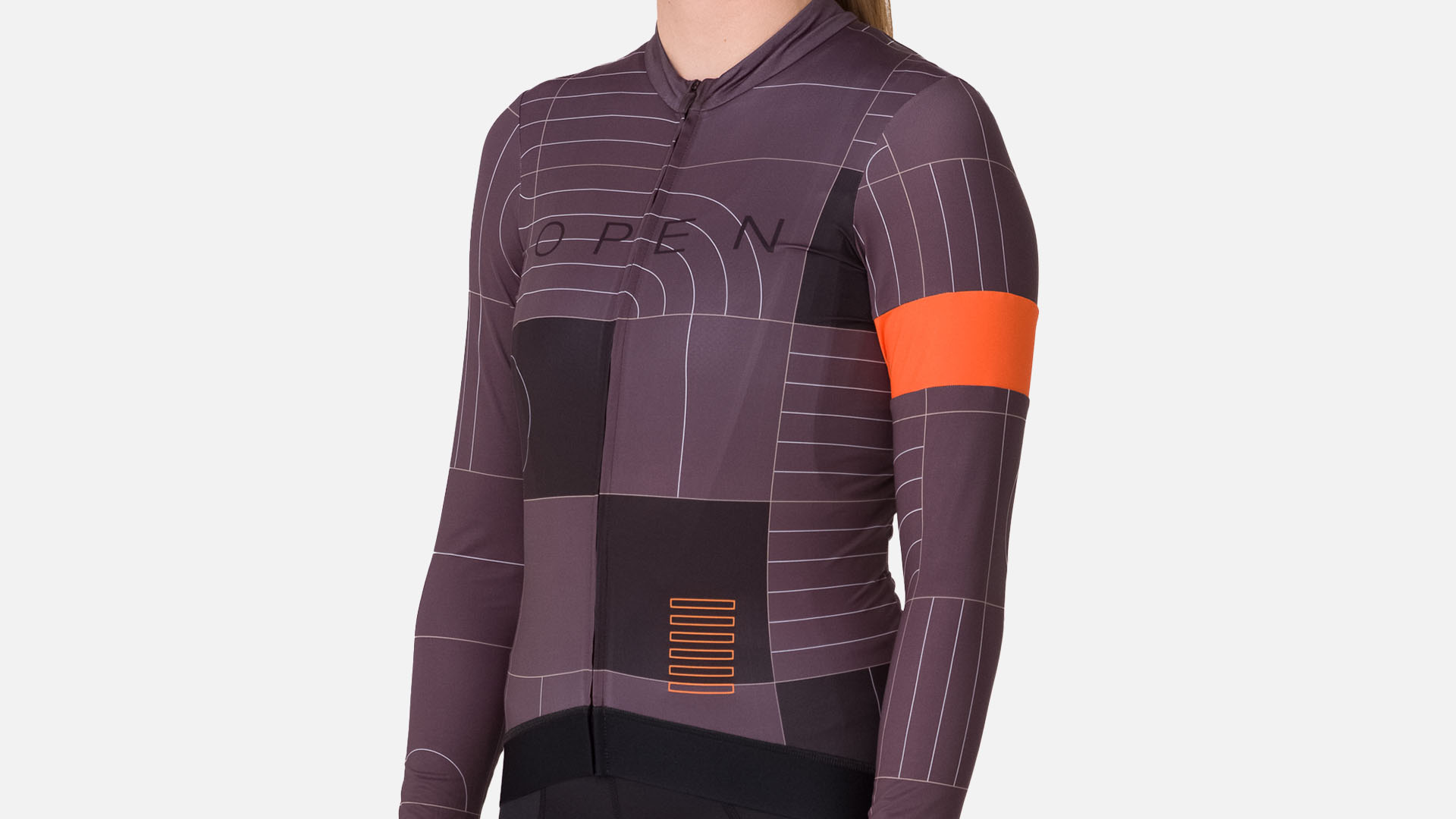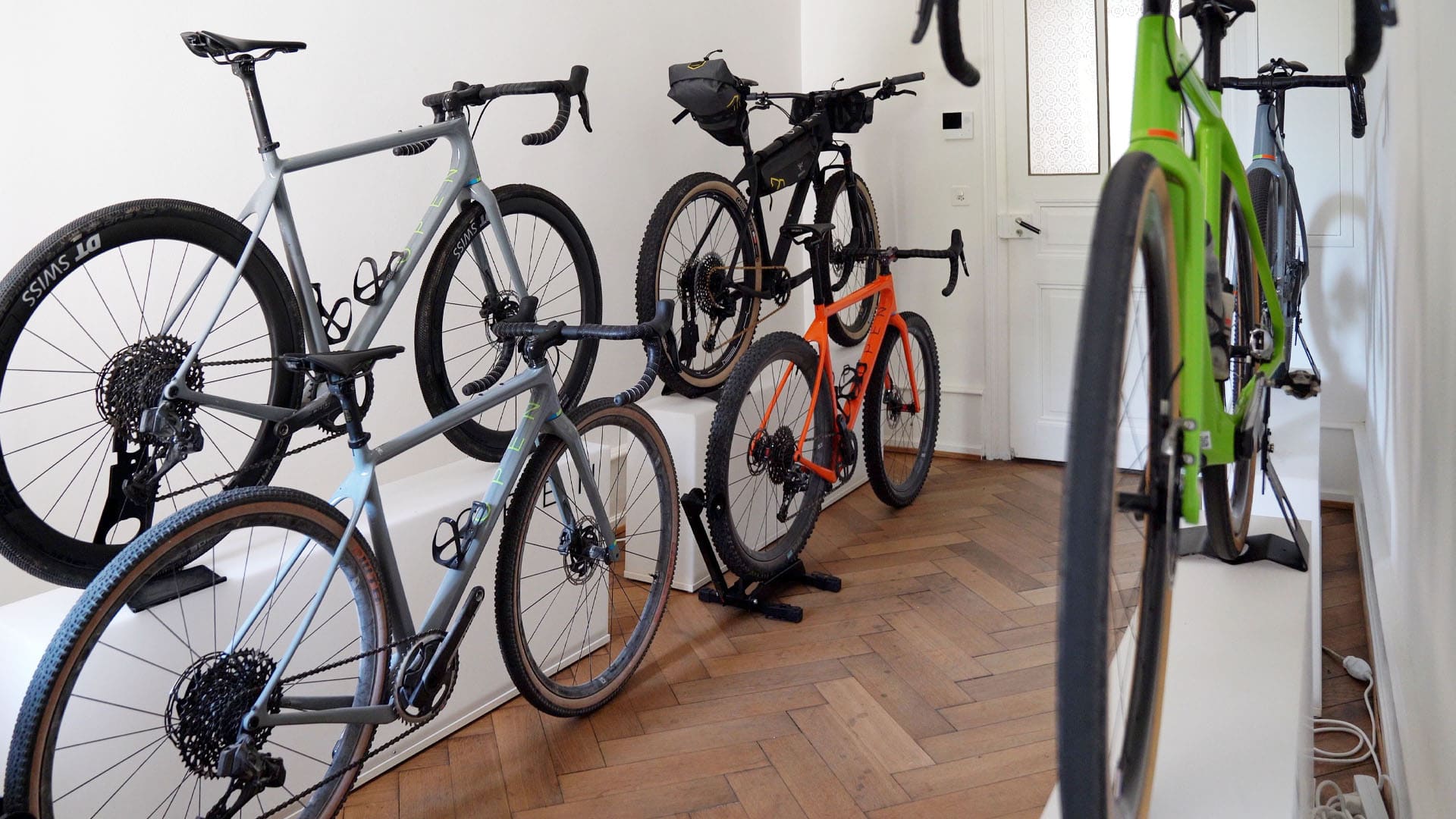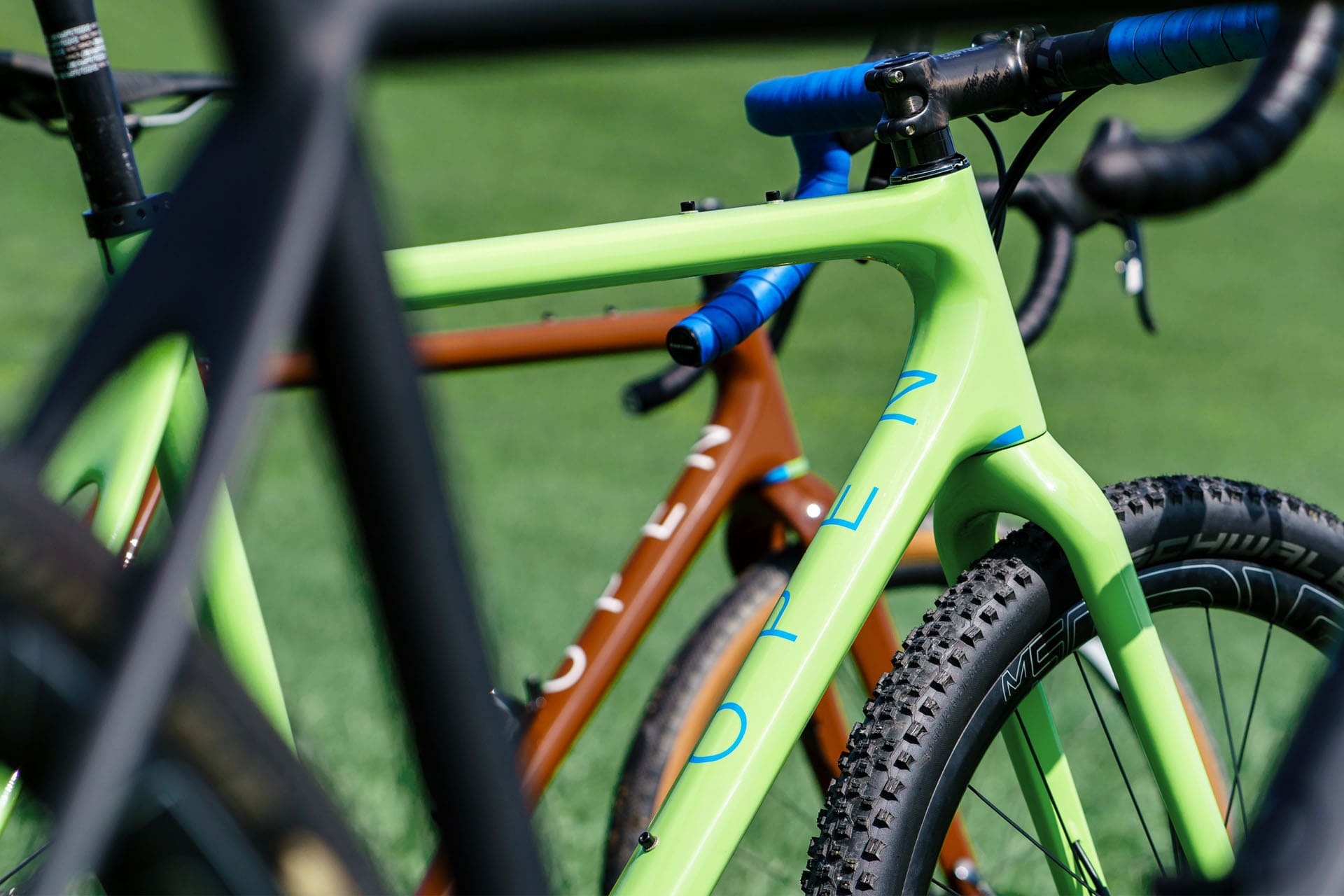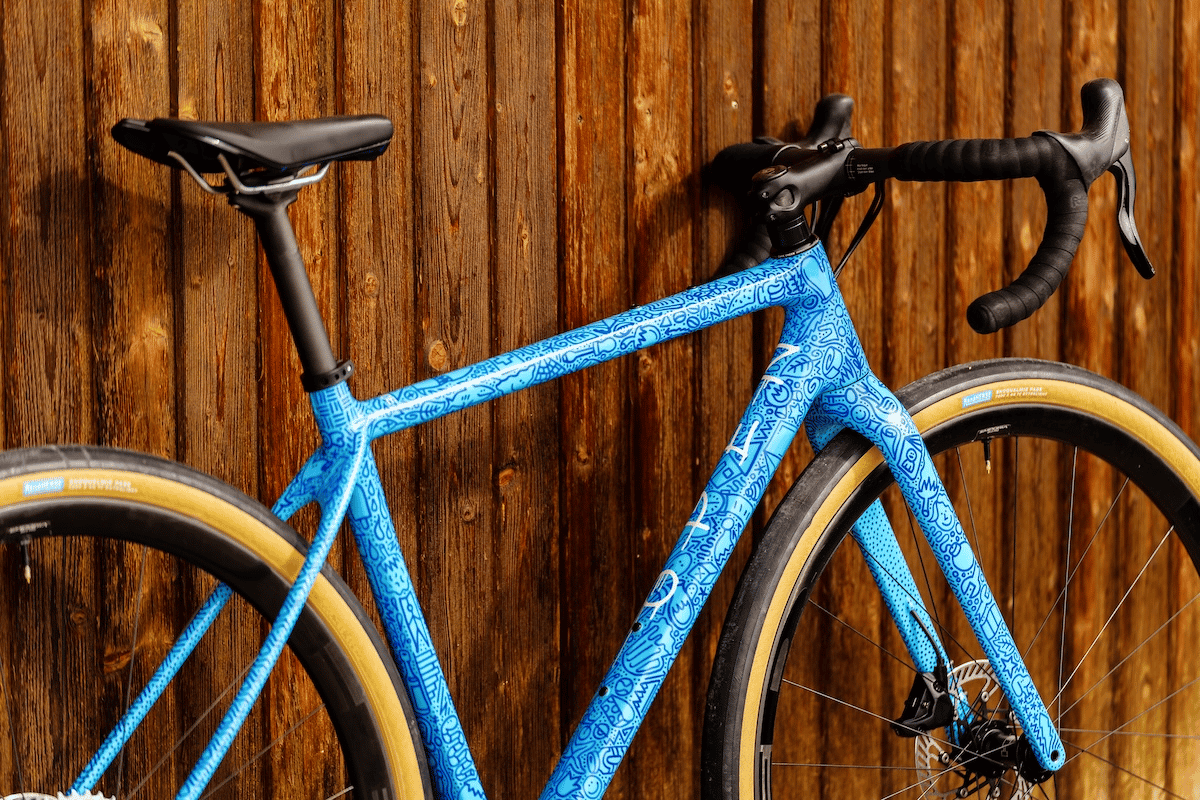Calculating your single chainring (1x) gears
18. Nov ’16
General
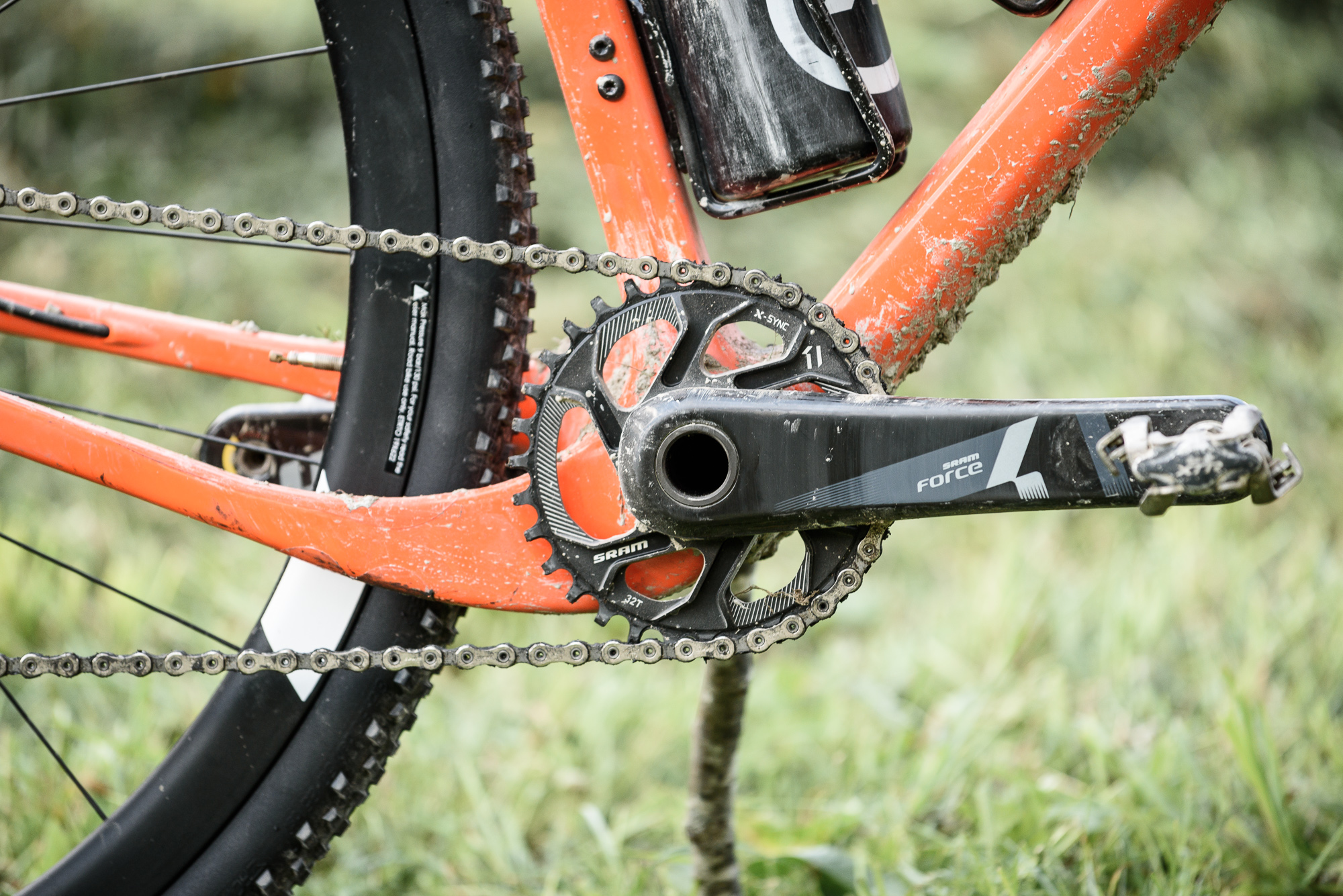
I often get questions about what gears to pick when going from 2x to 1x drivetrains. If you just want to get a straight conversion without understanding what is going on, you can use a gear calculator. But in my experience it pays off to first dig a little into what you really need (and you can always use a gear calculator after that). Here is my advice:

Basic approach
The easiest way would be to install a 1x drivetrain with the same gear range as your old 2x setup. To do that, you calculate your maximum gear ratio, your minimum gear ratio and then divide one by the other. Say you have a road bike (it works the same for MTB obviously) with a 53-39 crank and an 11-28 cassette. This means your biggest gear is 53/11=4.82 and your smallest gear is 39/28=1.39 and thus the range is 4.82/1.39=3.47.
Since clearly all this range has to come from your cassette on a 1x drivetrain you need to find a cassette close to that range. Here are the ranges for the most common cassettes that you might want to consider for 1x setups:
11-36=3.27 range (Shimano or SRAM)
11-40=3.64 range (Shimano)
11-42=3.82 range (Shimano)
11-46=4.18 range (Shimano)
10-42=4.20 range (SRAM)
9-44= 4.89 range (e13)
10-50=5.00 (SRAM)
So in this example, the 11-40 is closest, a bit more range but probably the best choice (or if you think you can do with a bit less range, you could go with the 11-36). Within reason, you can mix these cassettes on drivetrains of another brand, as long as the range of the derailleur is OK. The exception is the SRAM 10-50 cassette which only works with SRAM Eagle. And the 11-46t cassette only works with Shinano XTR Di2. Note: you do also have to take into account that a Shimano MTB cassette uses a different cassette body on the wheel than their road cassette. Not a huge issue but something to keep in mind when picking the wheels.
So with the cassette picked, you then choose the chainring that gives you the same biggest and smallest gear, which in this case is the 53t ring.
A better way
The above way is the easy way (even easier if you use a gear calculator for it), but I think there is a better way. The problem with the above method is that the steps between gears may be a bit bigger than you'd like. So instead of trying to copy your 2x range, I think it's worthwhile to first ask yourself: What gears do I really need? There are two sides to this:
9-10-11-12-13-21-23-25-28-32-36-40-46-52
So back to our original example, if your cassette was 11-28 on your 2x setup and you decide you rarely use the bottom two gears but need one extra at the top, then the 11 becomes a 13 and the 28 becomes a 32.
So now you have "virtual" 2x setup with 53/13=4.08 as the biggest and 39/32=1.22 as the smallest gear for a range of 4.08/1.22=3.34. Looking back at the cassettes, that means you have a choice: either go with the 11-36 and not quite get the biggest or smallest gear you wanted, or go with the 11-40 and get more than you really need.
The second approach works the best for people who have quite a big range on their 2x setup, so the above is not the best example.
Take for example a 50-34 compact crank with an 11-32 cassette, meaning 50/11=4.55 for the biggest and 34/32=1.06 for the smallest gear. If you don't need the two smallest cogs (biggest gear) but would like one extra small gear, then your 11-36 cassette becomes a virtual 13-36 cassette. Now your gears are 50/13=3.85 and 34/36=0.94 respectively, for a range of 3.85/0.94=4.10, so very close to the 11-46 and 10-42 cassettes (they are so close, you can really let personal preference for SRAM or Shimano decide). Say you choose SRAM's 10-42, then the biggest gear you wanted was 3.85, so the chainring you need to go with this is 10*3.85 so a 38.5t ring. Since with 1x, rings have to be even-numbered, the 38t makes sense.
For extra credit: If you want to go all out, you can now also do the math on both the chainring below and above the theoretical optimum, so the 38t and the 40t ring. You can calculate the biggest and smallest gear (in case that would be 38/10=3.80 and 38/42=0.90 with the smaller ring and 40/10=4.00 and 40/42=0.95 respectively) and see which of those options you like best? A bit more top end gear compared to what you first thought at the expense of a bit of your smallest gear end, or the reverse.
I hope this helps, please let me know if anything is unclear in this or if you have any other comments, questions, etc.

Basic approach
The easiest way would be to install a 1x drivetrain with the same gear range as your old 2x setup. To do that, you calculate your maximum gear ratio, your minimum gear ratio and then divide one by the other. Say you have a road bike (it works the same for MTB obviously) with a 53-39 crank and an 11-28 cassette. This means your biggest gear is 53/11=4.82 and your smallest gear is 39/28=1.39 and thus the range is 4.82/1.39=3.47.
Since clearly all this range has to come from your cassette on a 1x drivetrain you need to find a cassette close to that range. Here are the ranges for the most common cassettes that you might want to consider for 1x setups:
11-36=3.27 range (Shimano or SRAM)
11-40=3.64 range (Shimano)
11-42=3.82 range (Shimano)
11-46=4.18 range (Shimano)
10-42=4.20 range (SRAM)
9-44= 4.89 range (e13)
10-50=5.00 (SRAM)
So in this example, the 11-40 is closest, a bit more range but probably the best choice (or if you think you can do with a bit less range, you could go with the 11-36). Within reason, you can mix these cassettes on drivetrains of another brand, as long as the range of the derailleur is OK. The exception is the SRAM 10-50 cassette which only works with SRAM Eagle. And the 11-46t cassette only works with Shinano XTR Di2. Note: you do also have to take into account that a Shimano MTB cassette uses a different cassette body on the wheel than their road cassette. Not a huge issue but something to keep in mind when picking the wheels.
So with the cassette picked, you then choose the chainring that gives you the same biggest and smallest gear, which in this case is the 53t ring.
A better way
The above way is the easy way (even easier if you use a gear calculator for it), but I think there is a better way. The problem with the above method is that the steps between gears may be a bit bigger than you'd like. So instead of trying to copy your 2x range, I think it's worthwhile to first ask yourself: What gears do I really need? There are two sides to this:
- How often am I in my biggest gear (so 53/11 in the example) and even the second-biggest gear (53/12)? It's easy to figure out, just keep a close eye on it during your rides. There are many people who rarely use their biggest gear, so why hang on to it and "stretch" your 1x range at the expense of bigger gaps between the gears?
Note that I am not suggesting to only lose the gear you NEVER use, but even a gear you use once in a blue moon, do you really need it? Can you not simply roll out instead of still pedalling on a 65kmh descent? Also realise that the answer to this question depends on the type of bike. Pedalling along at 65kmh may make more sense on a road bike on the road than on an U.P. on treacherous trails.
And to those people who insist they need a 53/11 as their biggest gear, really? You need the same gear as Froome and Sagan? Unless you are a pro, it's unlikely you'll TT as fast, climb as fast or descend as fast. In fact, within 10% of them would already be very impressive, so that would be a 48/11 or 53/12 as biggest gear. And yes, I know the comparison doesn't fly 100% but I just want you to think about what you really, realistically need.
- Do I need my smallest gear (or alternatively, do I need something smaller than my smallest gear)? In particular when switching from a road bike to the U.P., you may need some extra small gears to ride the crazy terrain you're dreaming about. The easiest way to figure this out is to get a feel for "I would love to have one smaller gear, or two smaller gears". It's not an exact science, but an approximation.
9-10-11-12-13-21-23-25-28-32-36-40-46-52
So back to our original example, if your cassette was 11-28 on your 2x setup and you decide you rarely use the bottom two gears but need one extra at the top, then the 11 becomes a 13 and the 28 becomes a 32.
So now you have "virtual" 2x setup with 53/13=4.08 as the biggest and 39/32=1.22 as the smallest gear for a range of 4.08/1.22=3.34. Looking back at the cassettes, that means you have a choice: either go with the 11-36 and not quite get the biggest or smallest gear you wanted, or go with the 11-40 and get more than you really need.
The second approach works the best for people who have quite a big range on their 2x setup, so the above is not the best example.
Take for example a 50-34 compact crank with an 11-32 cassette, meaning 50/11=4.55 for the biggest and 34/32=1.06 for the smallest gear. If you don't need the two smallest cogs (biggest gear) but would like one extra small gear, then your 11-36 cassette becomes a virtual 13-36 cassette. Now your gears are 50/13=3.85 and 34/36=0.94 respectively, for a range of 3.85/0.94=4.10, so very close to the 11-46 and 10-42 cassettes (they are so close, you can really let personal preference for SRAM or Shimano decide). Say you choose SRAM's 10-42, then the biggest gear you wanted was 3.85, so the chainring you need to go with this is 10*3.85 so a 38.5t ring. Since with 1x, rings have to be even-numbered, the 38t makes sense.
For extra credit: If you want to go all out, you can now also do the math on both the chainring below and above the theoretical optimum, so the 38t and the 40t ring. You can calculate the biggest and smallest gear (in case that would be 38/10=3.80 and 38/42=0.90 with the smaller ring and 40/10=4.00 and 40/42=0.95 respectively) and see which of those options you like best? A bit more top end gear compared to what you first thought at the expense of a bit of your smallest gear end, or the reverse.
I hope this helps, please let me know if anything is unclear in this or if you have any other comments, questions, etc.

